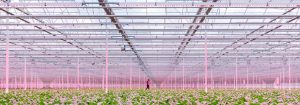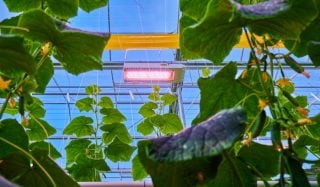Light is perhaps the most important consideration for optimizing plant growth in a greenhouse or vertical farm. There are several myths surrounding the specific light spectra used for growing crops and, more specifically, the use of white, green, or broad-spectrum light. This article is the second in a series of interviews with Signify’s Esther de Beer, manager of the team of plant specialists at Philips Horticulture. In this interview we asked the question: Do you need ‘white’ light to grow better crops?
Interested in the first interview with Esther, where she answers the question if green light penetrates deeper into the canopy? Read it here.








